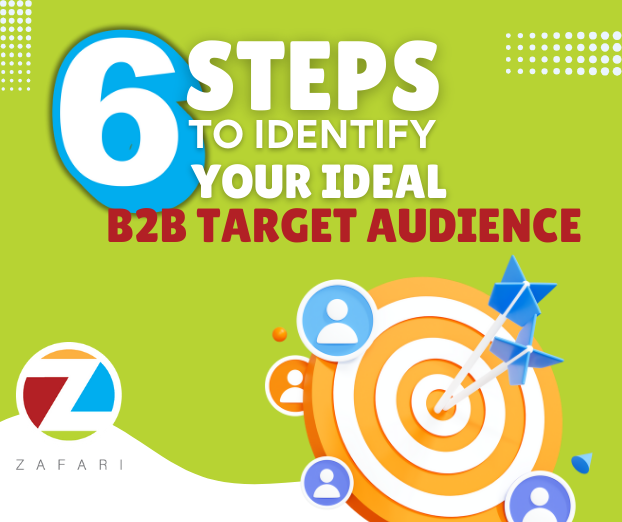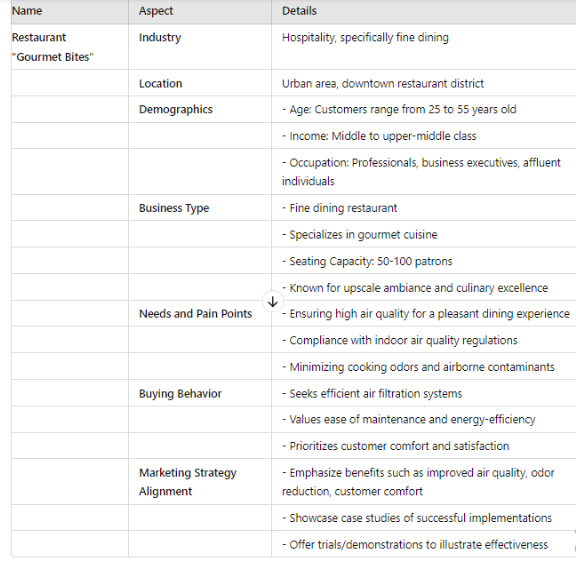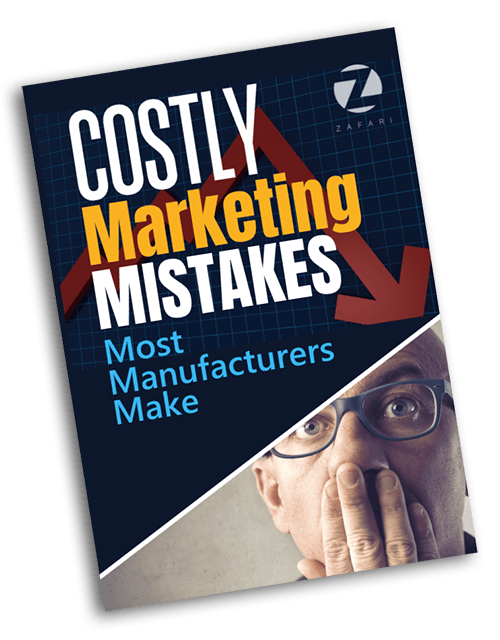Whether you’re launching a new venture or managing an established B2B business, knowing your target audience and their needs is crucial for success.
Yet, many businesses overlook these vital insights, making it challenging to craft effective brand strategies in today’s competitive markets. This is one of those common mistakes made by manufacturers or B2B firms which can adversely impact their lead generation results.
It’s essential to invest time in understanding the needs, interests, and challenges of your demographics.
We have created a 6-step plan to help you identify the right audience for your B2B firm. By following this plan, you’ll not only significantly improve the effectiveness of your marketing plan, but also deliver exceptional customer service that fosters loyalty and repeat business.

STEP 1: Understand the Problems Your Product or Service Solves
When marketing your B2B offering, it’s essential to focus on the benefits customers will experience rather than the details or features. Start by identifying the specific problems your products or services will solve, and how the resolution of those problems specifically impact your customer on day to day basis.
This process will help you identify which specific B2B audiences are faced with these problems.
For example, an advanced filtration system manufacturer learns that their clients from food production companies struggle to maintain clean air standards, lower maintenance expenses and improve operational efficiency.
By understanding these issues, the manufacturer can tailor their marketing efforts to address these pain points directly. This approach ensures that their product resonates with potential customers who are actively seeking solutions to these challenges.
This step is all about finding your B2B audience based on their pain points (problems). In the next step, we will learn how you can gather customer data to understand their requirements.
STEP 2: Conducting Effective Market Research
Market research is vital for identifying a B2B target audience by collecting and analyzing data on their needs, behaviors, and preferences.
Several methods can be employed for this:
Online Surveys:
Utilize online surveys to gather insights into your target audience’s preferences, needs, and behaviors.
Focus Groups:
Formulate focus groups comprising individuals who represent your target audience. Interact with them to observe reactions and gather insights into their needs and preferences.
Interviews:
Conduct one-on-one interviews to delve deeply into your target audience’s decision-making processes, needs, and preferences.
By conducting thorough market research, you will gain profound insights into your target audience, allowing you to create more impactful and tailored marketing strategies.
The next point will guide you through the segmentation and refinement of the audience you find.
STEP 3: Segment Current Customers Based on Similar Criteria
Once you are done with categorizing your audience according to their pain points, the next step is to segment them. Segmenting your customers helps you understand their common characteristics and preferences.
By categorizing customers by industry, company size, geographic location, or specific needs, businesses can uncover patterns and trends within their customer base.
This segmentation highlights the most profitable and satisfied segments, providing a valuable blueprint for identifying new prospects who share these traits.
For example, the same advanced filtration system manufacturer can group their customers into small start-ups, mid-sized companies, and large enterprises.
They might find that their most satisfied and profitable clients are mid-sized companies located in urban areas. This insight allows the provider to tailor their marketing and sales strategies to attract similar mid-sized companies in urban locations, optimizing their efforts and driving business growth.
Customer segmentation allows B2B companies to tailor their marketing and sales efforts more effectively, reaching and engaging potential customers who are more likely to convert. This approach improves targeting and drives business growth.
STEP 4: Build Detailed Customer Profiles and Buyer Personas
In this step, we will be creating detailed customer profiles and buyer personas.
This will help you understand your customers at a deeper level.
These profiles encompass demographics, firmographics, psychographics, and buying behavior, serving as clear representations of potential clients’ characteristics and needs.
By leveraging these profiles, businesses can align their products, services, and marketing strategies with the specific preferences and pain points of their target audience.
Here’s how the filter manufacturer has created a customer profile for their potential restaurant client:

Step 5: Leveraging Competitor Analysis for B2B Audience Identification
Analyzing competitors is pivotal for identifying your B2B target audience. By scrutinizing their marketing campaigns, target audience, and customer feedback, businesses can uncover strengths, weaknesses, and market gaps. Here’s how to effectively analyze competitors:
- Examine competitors’ websites, social media profiles, and advertisements to recognize their target audience, messaging, and branding strategies.
- Evaluate customer feedback on competitors’ products/services to understand strengths, weaknesses, and market gaps for targeting.
- Study competitors’ social media profiles to understand their audience demographics, messaging tactics, and engagement approaches.
Step 6: Implementation
Once you’ve pinpointed your B2B target audience, refining your marketing strategy becomes crucial for meeting their needs effectively. Here’s how to refine your approach:
Craft Targeted Messaging: Utilize insights from customer profiling (shown in step 4) and market research to develop messaging and elevator pitches that address your audience’s pain points and requirements.
Select Optimal Channels: Analyze website traffic, social media data, and competitor strategies to choose the most effective channels—like social media, email, or content marketing—for reaching your audience.
Create Compelling Content: Produce engaging content tailored to your audience’s interests and challenges. This positions your brand as a knowledgeable resource and strengthens audience connections.
This way, you can enhance effectiveness, increase engagement, and achieve your business objectives more effectively.
The Bottom Line
Finding your B2B target audience boils down to these primary considerations:
- What is the size of the target company?
- Where is it located?
- How is its performance, revenue, and more?
- Why would they be interested in the products or services you sell?
- Which problems do they need you to solve?
Identifying your B2B target audience is essential for crafting focused campaigns that meet your audience’s needs.
Remember, understanding your audience is an ongoing process. Continually refine your strategy based on their changing preferences to stay competitive and achieve your business objectives. By staying PROACTIVE, you can establish industry leadership and drive business growth.
Reach out to us to learn more about improving your strategies to identify and captivate potential customers. We have honed a proven framework to craft marketing messages that stand out and instill trust in your brand.
Schedule a FREE STRATEGY CALL now!





